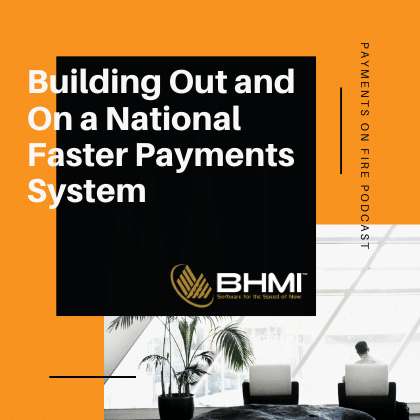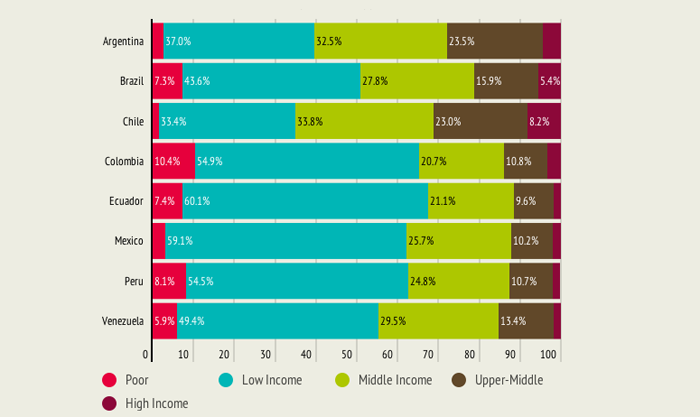

In business, debtor arises due credit sale of goods and services which is a very common feature of business transactions. In accounting, debtor is a term used to describe a person or organization that owes money to another person or organization. This means that a debtor is said to be an entity that has a legal obligation to pay to another entity. Provision for bad debts is an attempt to anticipate possible losses due to bad debts and to keep aside an amount out of profit to meet the loss estimated in the following years. In this method, we can directly written off bad debts, and no involvement of contra-asset A/c i.e. “Allowance for doubtful debt”. We know that bad debt is a loss and is adjusted with the current year’s Profit & Loss A/c.
This basic portrait provides decision makers with fairly presented information about the accounts receivables held by the reporting company. Here, the allowance serves to decrease the receivable balance to its estimated net realizable value. As a contra asset account, debit and credit rules are applied that are the opposite of the normal asset rules. Thus, the allowance increases with a credit and decreases with a debit. The more accounts receivable a company expects to be bad, the larger the allowance.
If the Income tax officer reject the amount of bad debt, then the assess will be require to pay tax on such amount written off. But when the situation of your customers gets worse or your belief that he will pay you is in doubt, is when you got to deal with the debts differently. Or the latest updates, news blogs, and articles related to micro, small and medium businesses , business tips, income tax, GST, salary, and accounting. Will have a massive effect on the firm’s financial condition because of its immediate impact on the company’s profit and loss statement. As a result, anyone must do the estimation only using the firm’s past performance.
What is the correct double entry for bad debts?
The double entry for a bad debt will be:
We debit the bad debt expense account, we don't debit sales to remove the sale. The sale was still made but we need to show the expense of not getting paid. We then credit trade receivables to remove the asset of someone owing us money.
There are various reasons why debtors cannot repay their debts, they either go bankrupt or have financial problems, trade dispute or fraud. If an entity realises that it is unlikely to recover that debt from the debtor, it must write off the debt from its books. What is the entry for bad debts at the time of dissolution of partners… The provision for doubtful debts is also known as the provision for bad debts and the allowance for doubtful accounts. BWW estimates 15% of its overall accounts receivable will result in bad debt. For example, assume Rankin’s allowance account had a $300 credit balance before adjustment.
Moneylender Deals
Using the percentage of sales method, they estimated that 1% of their credit sales would be uncollectible. When accountants record sales transactions, a related amount of bad debt expense is also recorded. The rule is that an expense must be recognized at the time a transaction occurs rather than when payment is made. The direct write-off method is therefore not the most theoretically correct way of recognizing bad debts. It estimates the allowance for doubtful accounts by multiplying the accounts receivable by the appropriate percentage for the aging period and then adds those two totals together.
Much patience in understanding the customers/students requirement and also understand the levels of skills and build the career for effective use of Tally.ERP 9. He is very good and friendly in teaching and very much particular to the learner’s side to give confidence. Always available and can solve the problem on fingertips, He is not doing tally selling business he is just spreading the tally knowledge in a user-friendly manner.
What is the journal entry for bad debts?
Record the journal entry by debiting bad debt expense and crediting allowance for doubtful accounts. When you decide to write off an account, debit allowance for doubtful accounts and credit the corresponding receivables account.
To monitor bad debt and follow-up on payments owed, businesses create journal entries for the allowance of doubtful accounts. In the journal entry, it debits bad debt expenses while crediting the amount it expects to be paid. Continuing our examination of the balance sheet method, assume that BWW’s end-of-year accounts receivable balance totaled $324,850. This entry assumes a zero balance in Allowance for Doubtful Accounts from the prior period. Knowing when money changes hands, as opposed to when your business first recognised income or expenses, is important.
Advanced Corporate Accounting
The seller can charge the amount of an bill to the unhealthy debt expense account when it is certain that the invoice will not be paid. The journal entry is a debit to the dangerous debt expense account bad debts entry and a credit to the accounts receivable account. At the end of your accounting period, you need to make an adjusting entry in your general journal to bring your accounts receivable balance up-to-date.
The information, product and services provided on this website are provided on an “as is” and “as available” basis without any warranty or representation, express or implied. Khatabook Blogs are meant purely for educational discussion of financial products and services. Khatabook does not make a guarantee that the service will meet your requirements, or that it will be uninterrupted, timely and secure, and that errors, if any, will be corrected. The material and information contained herein is for general information purposes only. Consult a professional before relying on the information to make any legal, financial or business decisions.
Sometimes debts that are written off as bad debts are subsequently settled by the debtor in full or partly. In such cases, it is important to cancel the effect of the bad debt expenses previously recorded. Here you can find the meaning of What is the entry for bad debts at the time of dissolution of partnership firm?
The debt or loan should be for the business or profession of the assessee and the said debt or loan should be for the relevant accounting year. Any debt which does not relate to the assessee business or profession, the deduction is not allowed in case of such debt. The tax authority will look this kind of transactions as a way of tax evasion. As long as he is in a position to pay you or you believe that you can recover the amount from him, is known as ‘good debts.
- Certain other negative objects, like some judgments, unpaid tax liens, and Chapter 7 bankruptcy, can stay in your credit score report for greater than seven years.
- Write off means adjusting your accounts book to represent the actual amount in your current account.
- However, if the company adopts a more stringent credit policy, it may have to decrease the percentage rate because the company would expect fewer uncollectible accounts.
- The following entry should be done in accordance with your revenue and reporting cycles , but at a minimum, annually.
After confirming this information, Gem concludes that it should remove, or write off, the customer’s account balance of $1,400. The two methods of accounting for uncollectible accounts receivable are ________. The best trade credit insurance also provides credit data and intelligence designed to help companies improve their credit-related decision making and credit management. In the case where a business allows extended credit to their customer, there is always a risk for bad debts. So that’s why all business calculates the amount of bad debt for the current financial year on the expectation method.
Accounting Chapters
When prospects don’t pay you, your dangerous money owed bills account will increase. A bad debt is debt that you’ve officially written off as uncollectible. It is cash you thought you would obtain but don’t, so it impacts your organization’s bottom line. The percentage of credit score sales strategy focuses on the income assertion and the matching principle. Sales revenues of $500,000 are instantly matched with $1,500 of dangerous money owed expense.
For instance, in an ancient times the company wrote off a debt of $1,500 by debiting the unhealthy money owed expense account and crediting accounts receivable. When accountants ultimately write off an accounts receivable as uncollectible, they can then debit allowance for doubtful accounts and credit that amount to accounts receivable. An allowance for doubtful accounts is an allowance for bad debt that decreases accounts receivable on a company’s balance sheet. In this method, first, we need to estimate the uncollectible receivables. For example, some companies consider on percentage of sales, some companies consider on percentage of receivables, etc. Then, Bad debts expense is recognized before the debt actually become un-collectible.
Eventually, once it is known that a certain client will not pay the bill, remove it from the provision for doubtful debts. This kind of creditor can forgo the background investigation and credit history, which will make it simpler for you to get a mortgage. Because you typically repay the debt within a brief period, this type of bad debt has borrowing costs that add up fast. If the vendor is a new company, it’d calculate its unhealthy debts expense through the use of an industry average until it develops its own experience rate. A statutory demand is a formal demand for cost from a debtor that sets out why the demand has been set, when the debt should be paid and the repercussions if the cost is not received.

Such cards might charge higher interest, depending on the creditor. It means the longer the customer takes to repay the loan, the higher the interest rate will be. The sum of debt which is due across all your credit cards is bad debt. This implies that cardholders must practice financial self-control by staying within their limits and repaying any obligations on time in order to avoid incurring extra interest or charges.
As long as you have a legitimate reason as to why you consider it should be put aside you can stop the creditor from making use of in your firm to be wound up. If you’ve obtained a court docket order then you may not have to serve a statutory demand. You can ask the court to enforce the order but if they fail you can serve an software to wind up an organization if the debt is over £750. The most necessary factor when serving a statutory demand to a person is the way by which you serve it. When the creditors are not able to collect the debts due to some other reasons. The entity may be an individual, a firm, a government, a company or other legal person.
Journal entry for Bad debts with modern rules:
As with charging interest on late funds you need to think twice before making use of a debt recovery charge to make sure that it would be beneficial for your business. If the amount recovered doesn’t exceed the expected, then the remaining amount will be treated as bad debts. If the amount received exceeds the recoverable amount, then the excess amount received will be treated as the income in the financial year of the receipt. Bad Debts of a discontinued business which is already discontinued before the accounting year starts, cannot be claimed as a deduction from the profit of the continued business of the assessee. Any such debt or part of debt should be allowed as a deduction in the year in which is becoming irrecoverable.
After doing so, I am now getting accurate financial statements via Tally – with lightning speed and accuracy. Then go throw the recepit voucher and received money there and check in journal you will see your recover amount bed debs and cr. Realisation expenses of Rs. 3,500 were to be borne by and also to be paid by A partner. One bill for 500 under discount was dishonoured and had to be paid by the firm. In this year’s recruitment cycle, a total of 3539 vacancies were released.

The balance in the account Allowance for Doubtful Accounts is ignored at the time of the weekly entries. However, at some later date, the balance in the allowance account must be reviewed and perhaps further adjusted, so that the balance sheet will report the correct net realizable value. If the seller is a new company, it might calculate its bad debts expense by using an industry average until it develops its own experience rate. Using the allowance method, accountants record adjusting entries at the end of each period based on anticipated losses.
Save taxes with Clear by investing in tax saving mutual funds online. Our experts suggest the best funds and you can get high returns by investing directly or through SIP. Download Black by ClearTax App to file returns from your mobile phone. Am basically a non-commerce student but accidentally came into the field of Accounts , and with no guidance or support…
What is the correct double entry for bad debts?
The double entry for a bad debt will be:
We debit the bad debt expense account, we don't debit sales to remove the sale. The sale was still made but we need to show the expense of not getting paid. We then credit trade receivables to remove the asset of someone owing us money.

